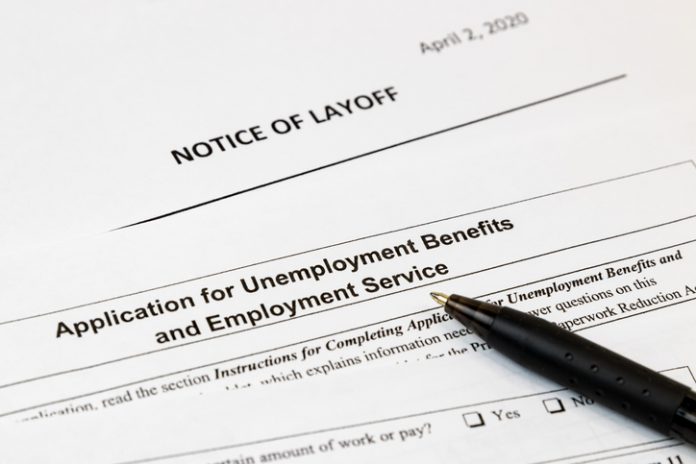(The Center Square) – School districts across the country are laying off teachers, citing high inflationary costs, budget deficits, and federal COVID-era funding running out after receiving windfalls in federal subsidies for three years.
The federal COVID-era subsidies were funded through ESSER (Elementary and Secondary School Emergency Relief) grants administered by state education agencies. Financed through the CARES Act and supplemental appropriations, the grant funding expires Sept. 30.
In California, within one month, roughly 1,600 California public school teachers and staff received layoff notices – a “massive increase” from previous years, California Teachers Association president David Goldberg told the Orange County Register.
Recent announcements include Pasadena Unified School District’s cutting 200 jobs and Anaheim Union High School District cutting 100, citing declining enrollment, the end of ESSER funding and budget shortfalls, for example, according to news reports.
The number of total education job losses won’t be known until after the state legislature passes a budget in June. The budget shortfall varies: Gov. Gavin Newsom’s projected shortfall is $38 billion, the state Legislative Analyst’s Office’s is $73 billion.
In Arkansas, which has been grappling with a teacher shortage for years, the Little Rock School District began its first round of layoffs in February, citing declining enrollment, high construction costs, and high interest rates on debt payments, the Arkansas Times reported. This is after nearly 10% of teachers in the Arkansas public school system left the education workforce before the 2023-2024 school year, according to a recent state report.
In New York, school districts statewide are facing budget shortfalls and massive layoffs due to the governor’s proposed budget, which reduces public school funding by $400 million, News 12 Long Island reported. The Riverhead Central School District already announced it is cutting 38 teaching jobs due to “fiscal” reasons, citing $19 million in COVID money it already spent with no more relief money coming. Buffalo Public Schools announced it was cutting $90 million from its 2024-2025 budget citing the COVID relief money ending. This translates to roughly 310 fulltime job cuts.
In Maryland, the Howard County Public School System announced 348 jobs would likely be cut in order to balance its fiscal 2025 budget. With a $103 million budget shortfall and increasing costs, including 13.6% increases in employee health insurance costs alone, its acting superintendent said, “a significant portion of our budget is staff, we cannot address the structural financial challenges without impacting staff,” the Baltimore Sun reported.
In Massachusetts, Dighton-Rehoboth Superintendent of Schools Bill Runey articulated a fiscal crisis many states are facing: “inflation is at record highs” but state funding for public schools doesn’t account for it. “We are cutting positions, and other districts are cutting even more,” he said, the Taunton Daily Gazette reported. “COVID relief artificially boosted the budget,” he said, and loss of ESSER money and high inflationary costs created a “fiscal crisis.”
In Texas, Arlington ISD announced it is cutting 275 jobs funded by ESSER, including positions related to classroom support, mental health, tutoring and after-school care.
Fort Worth ISD also announced it was cutting 133 ESSER funded jobs. This is after the district cut 200 jobs and had a $80 million deficit in the 2022-2023 school year, the Fort Worth Report reported. Well before COVID money was funneled into schools, Fort Worth ISD’s school board for more than a decade voted to pass unbalanced budgets with deficits, the Fort Worth Report notes.
Despite rising property taxes and a $1.2 billion bond project approved by voters in 2021, the district kept increasing its budget beyond its revenue as it continued to lose students. The district has lost enrollment every year since 2017. Enrollment dropped by roughly 10% between 2019 and 2021, the Wall Street Journal reported.
Education job losses are part of a predictable fiscal cliff, Education Resource Strategies, a nonprofit consultant that works with school districts, warned last year.
ESSER allocated $190 billion nationwide over three years, accounting for between 4% and 7% of total education funding for each state, through a round of funding allocated by Congress (ESSER I, ESSER II, and ESSER III). ESSER funds were used to augment budgets impacted by declining student enrollment, increasing employee salaries and benefits, and widespread inflation, the group and others say. Some finance experts warned against districts using ESSER money to fund salaries knowing the funds would not last.
As federal funds augmented budgets, inflationary costs continued to skyrocket from insurance to electricity, food, supplies and other expenses.
School districts in some states were already facing severe enrollment losses, which directly impact funding formulas. “ESSER may have temporarily mitigated what would have otherwise been significant revenue loss in some districts. This means that districts with enrollment decline may face an even steeper cliff than anticipated,” ERS said.
Based on several factors, ERS identified 15 states that would suffer the most this year from ESSER losses. It also published a report to help districts identify ESSER fiscal cliff risks.
Originally published by The Center Square. Republished with permission.
For more great content from School Reform News.
For more from The Heartland Institute.








